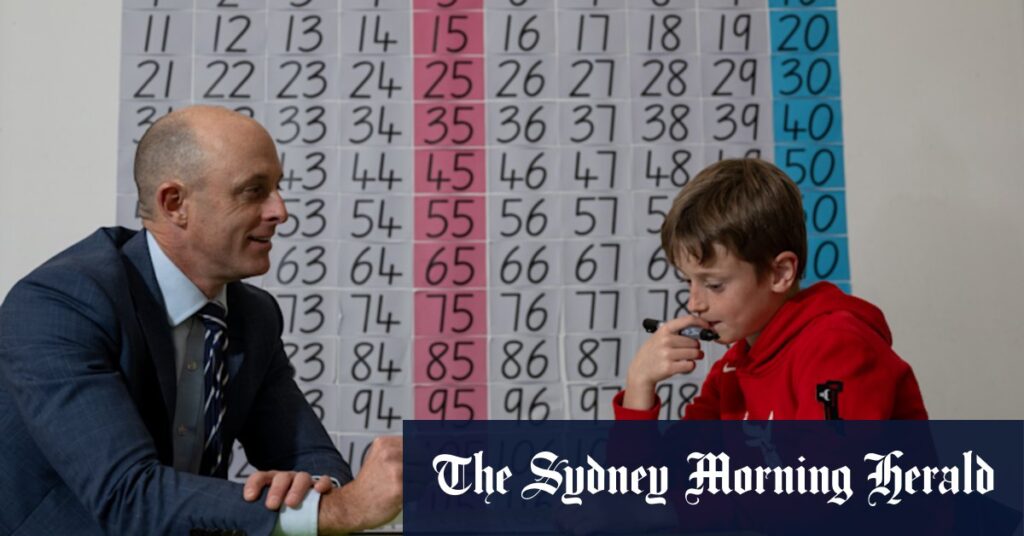To build fluency, students do timed practice, and once students are fluent and accurate with a topic, they can apply what they know more flexibly to more complex problems.
Coulson said his school mapped its maths curriculum into elements to cater for the whole seven years of a child’s time at school. They then kept returning to what students had learnt to commit it to memory.
Until now, a common model for teaching maths has been called “inquiry-led learning”, which encourages students to discover information themselves through critical thinking. The new approach is much more prescriptive.
“We needed to cut the fluff. We needed to be really explicit with how we were explaining and teaching things,” he said.
Hunter said state government schools, the Catholic and independent school sectors needed to commit to a 10-year strategy to lift teacher confidence and student performance, and schools and governments should commit to achieving a 90 per cent proficiency in numeracy, measured by NAPLAN.
Loading
It comes off the back of a national study released in April, The Maths Guarantee: How to implement great maths teaching in primary schools, which found one-third of Australian students lacked proficiency in maths, with those struggling coming from both disadvantaged backgrounds and well-off families.
The institute said primary maths “master teachers” and maths hubs should be created to link the primary schools that were excelling with those that needed extra help.
Hunter said the cost of the reforms would equate to $67 per primary student per year over a decade.
In May, the Victorian state budget allocated $46 million to build maths skills in classrooms, including funding to develop a numeracy test, which every grade 1 student at a government school would do from 2026. The new screening tool would help teachers find students who needed extra maths support. There was an extra $2.4 million for “advanced maths camp” for 1000 year 9 and 10 students.
Deputy Premier and Minister for Education Ben Carroll said the government was making maths best practice common practice. The government introduced a Mathematics Position Statement on May 19, which included embedding evidence-based practices and ready-to-use maths lessons plans. Four expert teachers had also been appointed as Victorian Maths Ambassadors.
Hunter said while this was a good step, more needed to be done.
“The wheels of government turn slowly. It’s not fair on children to wait for all the adults to get their acts together, when the evidence on what works best is clear and there are strong Victorian schools already keen to share practice.”
Hunter recommended parents ask their school how they taught maths and the research that underpinned that teaching and to ensure there was a plan to get students back on track if they were marked as “developing” or “needs additional support”.
Sunshine Heights Primary School principal David Suter, with support from Templestowe Heights Primary School and Bentleigh West Primary School, brought systematic maths instruction to his prep students last year.
He can’t wait for two years’ time when his grade 1 students hit NAPLAN testing and said the data for his grade 1 students this year was “exceptionally high”.
He acknowledged turning explicit instruction into practice could be tricky, but leaning on other schools that were excelling helped.
It was important for teachers and principals to “make brave leaps”, he said.
The Morning Edition newsletter is our guide to the day’s most important and interesting stories, analysis and insights. Sign up here.
Read the full article here

